
Fly Tying Cements, Adhesives & Epoxy
Fly tying head cements, glues, UV curing adhesives, thinners, lacquers, epoxies and application bottles. If you're fly tying, we should have you covered for gluing eyes, making chironomids, crafting saltwater heads, adding epoxy to wingcases, and much more.
Read more
Fly tying head cement, glues, UV adhesives, epoxy, and related products are often a necessary part of fly tying. Pacific Fly Fishers offers a complete line of cements and other adhesive products. Here is a useful guide to fly tying cements, glue, epoxy and other related products.
Fly Tying Cement – Fly tying cement is usually used after the fly is complete and is used just to coat the final thread wraps, usually at the head of the fly, to add durability to the fly. Fly tying cement can be used for other purposes as well, such as strengthening wingcases on a nymph, keeping dumbbell eyes solidly secured to the hook, etc. Some fly tying cements are designed to penetrate into the thread wraps for adding durability to the fly. Other fly tying cements are thicker and designed to produce a glossy, finished look to the fly such as on steelhead and Atlantic salmon flies. Flexible fly tying cements are usually used to strengthen a fly during the tying process, such as coating the wingcase of a Hare’s Ear Nymph to keep it from coming apart while fishing. Fly tying cements often begin to thicken over time so it is also common to see thinners offered for thinning down the cement to your desired thickness.
Epoxy – Two-part epoxy is commonly used in fly tying when a thick, glass-like appearance is desired on the fly. Examples would be large saltwater flies where a coating of epoxy is applied to cover the eyes and produce a clean, clear finish on the head of the fly. Epoxy is offered in 5-minute and 30-minute versions. Use the 5-minute version if you are going to epoxy each fly, one at a time. Use the 30-minute epoxy if you prefer to tie a number of flies and then epoxy them all at the same time. If you go with the 30-minute version for multiple flies, a rotating fly drier is recommended because the epoxy will run and drip off the fly until it is cured. If you are only epoxying small flies like just the wingcases of small nymphs, the 30-minute epoxy will work for multiple flies without the rotating fly dryer as long as you only use a small amount of epoxy and station them directly upright so the epoxy doesn’t run off the side while it dries.
UV Curing Fly Tying Adhesives – UV curing products have become very popular in fly tying. UV adhesives come in different thicknesses so they can be used like a cement or an epoxy. Their main advantage is that, with the use of a UV light (or exposed to sunlight), the UV adhesives cure in just a few seconds. Simply apply the UV adhesive, and when it is perfect, hit it with the light to cure it. UV curing products have become very popular for baitfish streamers to apply a thick, clear coating over eyes. They are also very popular for coating nymph and chironomid bodies for a very durable, very realistic appearance. UV product can dry with a tacky feel to them, however. You can remove this tacky feel with a coat of glossy head cement or by cleaning the tacky residue off with rubbing alcohol.
Fly Tying Super Glues – Super glue type adhesives are also popular in fly tying. They are usually used to add extra durability in the fly during the tying process. These super glue kinds of adhesives (like ZAP CA and ZAP-A-GAP) usually aren’t good as a head cement because they can leave a white residue on the fly. They also aren’t ideal for things like gluing eyes onto soft-bodies flies, like deer hair or synthetic fibers. They are good for keeping dumbbell eyes extra solid or keeping a parachute post from tilting forward.
Flexible Adhesives – Some products like ZAP GOO and Softex are very flexible and therefore very durable. ZAP GOO is amazing at gluing eyes onto flies like deer hair bass bugs and big saltwater baitfish flies where the eyes are glued onto the acrylic fibers used to make the fly. Softex is a very thin viscosity product and is often used to dip the head of a fly into the Softex. This produces a clear, very flexible coating over the fly that also holds eyes in place.
Lacquers – Lacquers aren’t as popular today but are still used, primarily for saltwater flies for either painting thread wraps and/or for painting eyes onto the head of the fly. The lacquer produces a durable, glossy head which can then have eyes painted on.
-
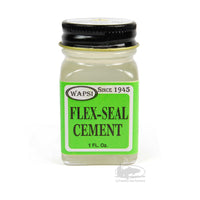 Flex-Seal Cement
Flex-Seal Cement
-
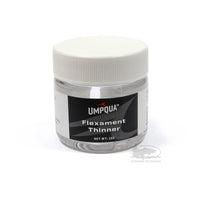 Flexament Thinner
Flexament Thinner
-
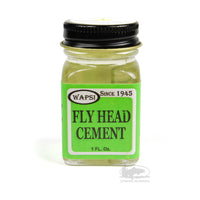 Fly Head Cement
Fly Head Cement
-
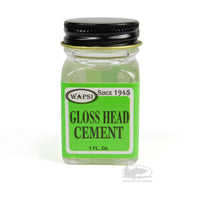 Gloss Head Cement
Gloss Head Cement
-
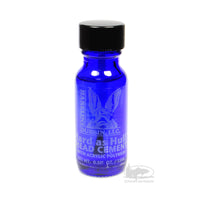 Hard as Hull Cement
Hard as Hull Cement
-
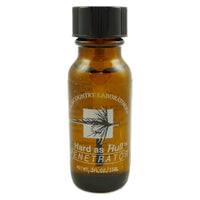 Hard as Hull Penetrator
Hard as Hull Penetrator
-
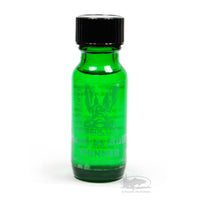 Hard as Hull Thinner
Hard as Hull Thinner
-
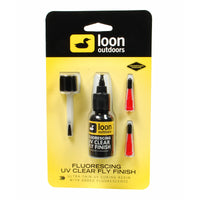 Loon Fluorescing UV Clear Fly Finish
Loon Fluorescing UV Clear Fly Finish
-
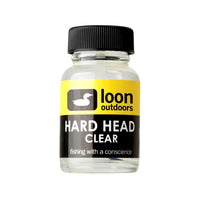 Loon Hard Head
Loon Hard Head
-
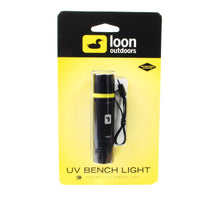 Loon UV Bench Light
Loon UV Bench Light
-
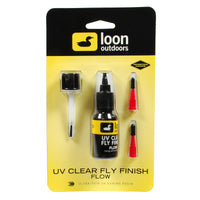 Loon UV Clear Fly Finish - Flow
Loon UV Clear Fly Finish - Flow
-
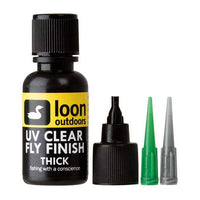 Loon UV Clear Fly Finish - Thick
Loon UV Clear Fly Finish - Thick
-
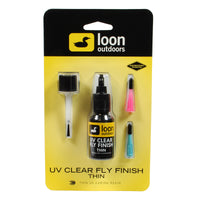 Loon UV Clear Fly Finish - Thin
Loon UV Clear Fly Finish - Thin
-
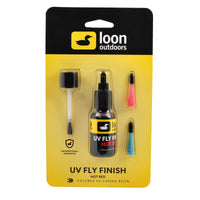 Loon UV Colored Fly Finish
Loon UV Colored Fly Finish
-
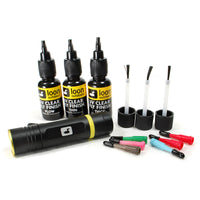 Loon UV Fly Tying Kit
Loon UV Fly Tying Kit
-
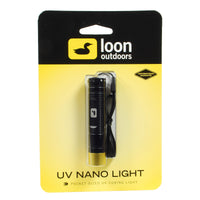 Loon UV Nano Light
Loon UV Nano Light
-
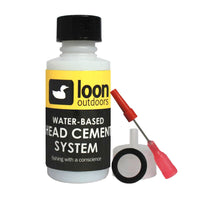 Loon Water Based Head Cement System
Loon Water Based Head Cement System
-
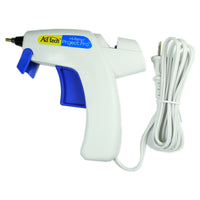 Mini Glue Gun
Mini Glue Gun
-
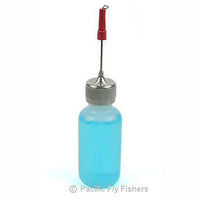 Plastic Applicator Bottle
Plastic Applicator Bottle
-
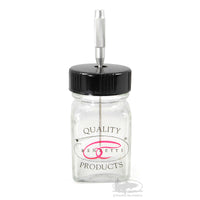 Renzetti Application Jar
Renzetti Application Jar
-
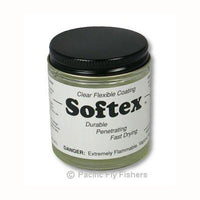 Softex
Softex
-
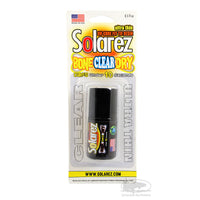 Solarez Bone Dry Clear UV Resin
Solarez Bone Dry Clear UV Resin
-
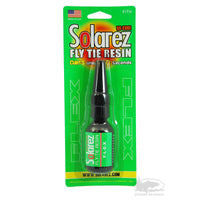 Solarez Flex UV Resin
Solarez Flex UV Resin
-
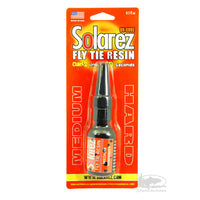 Solarez Medium Hard UV Resin
Solarez Medium Hard UV Resin
-
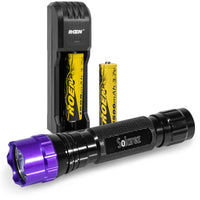 Solarez Resinator High Power UV Flashlight
Solarez Resinator High Power UV Flashlight
-
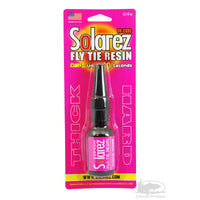 Solarez Thick Hard UV Resin
Solarez Thick Hard UV Resin
-
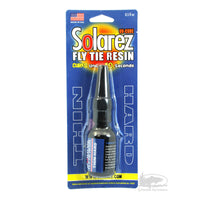 Solarez Thin Hard UV Resin
Solarez Thin Hard UV Resin
-
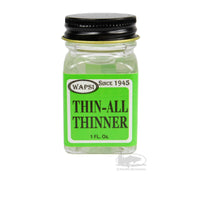 Thin-All Thinner
Thin-All Thinner




























